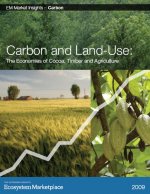Carbon and Land-Use
The Economies of Cocoa, Timber and Agriculture
By Ecosystem Marketplace View PublicationOver the past three years, the term ‘REDD’ (reduced emissions from deforestation and degradation) has risen from obscure acronym to hot-button issue for policymakers, conservation groups, investors and academics across the globe, with good reason. According the Intergovernmental Panel on Climate Change (IPCC), land use change accounts for approximately 20% of global greenhouse gas emissionsmore emissions than the transportation sector world-wide. Most of these emissions are the result of deforestation driven by demand for agriculture and timber. In response to rapid deforestation, stakeholders are aggressively sculpting policy and market tools to incentivize REDD or ‘avoided deforestation’ projects.
REDD offsets have become a hot issue in the debate over both international and emerging domestic regulated systems both in the US and the EU and a clear consensus has emerged around a phased approach that begins with capacity-building, moves into government financing, and culminates with direct payments for forest saved.
These direct payments, however, will not begin flowing under compliance schemes for years possibly not before 2020. That leaves the voluntary carbon markets as not only a testing ground for the development of REDD carbon credits, but also a means of generating immediate action. This publication is designed to introduce practitioners to the carbon markets, in particular the voluntary markets, and the current climate for reforestation, afforestation and REDD projects generating carbon credits.
This document is a collection of articles and one book chapter commissioned by the Ecosystem Marketplace (www.ecosystemmarketplace.com).

